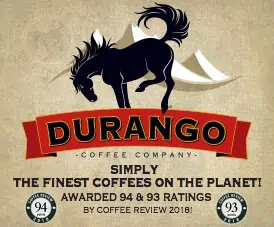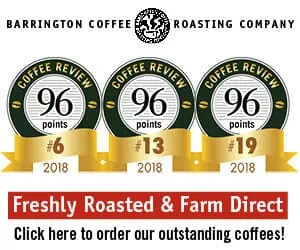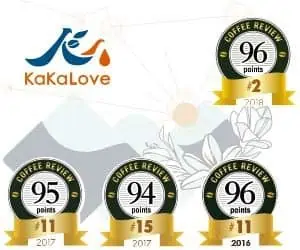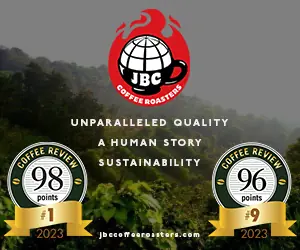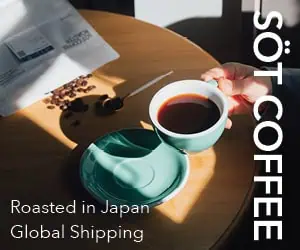Competitions aimed at finding and rewarding the best green coffees from a given country and crop have proven to be one of the great success stories in the recent history of coffee. The farmers whose coffees prevail in these juried competitions receive recognition and significantly higher prices, while aficionado consumers are rewarded with access to refined lots of exceptional coffees that otherwise might be lost in the great sea of decent-but-not-great beans flowing through normal channels to our cups and kitchens.
This month’s article reviews ten coffees that placed anywhere from first to thirty-third in recent coffee competitions organized by the Cup of Excellence in the Central American countries of El Salvador, Nicaragua, and Honduras. These coffees were purchased by American roasting companies via Internet auction at often dramatically higher prices than prevailing for even the most premium of specialty coffees. The Los Delirios Nicaragua reviewed here, for example, the first-place prize winner in the 2004 Nicaragua competition, was purchased at auction for $12.50 per pound green (unroasted) by two American roasting companies willing to put their money where their mouths are in support of artisan farmers and their distinctive coffees.
We Rate Coffee and Roast
Readers should keep in mind that the juries of international coffee cuppers who assign ratings to these coffees sample them as green coffees brought to identical light-to-medium roasts, whereas at Coffee Review we take into account the intertwined impact of both coffee and roast when assigning our ratings. This difference in approach mainly explains why my ratings are often significantly higher than the jury ratings for the same green coffees. I am cupping these coffees at what coffee professionals call “production” roasts. Unlike the one-size-fits-all sample roasts applied to green coffees for competition purposes, production roasts are custom designed by the roastmaster to maximize what she or he feels is the full potential of each coffee.
Of course there may be other reasons for the discrepancy between my ratings and the jury ratings: Some green coffees do not travel and store as well as others, for example, and by the time they reach the warehouses of the roasters some may have already faded or simplified in cup character, while others may have held steady or even improved. Finally, as an individual cupper with my own predilections I may tend to reward slightly different sensory characteristics than rewarded by the consensus of the cuppers on the juries. For example, I found the Nicaragua Los Delirios (rated 91.4 by the Nicaragua jury) an nicely acidy but slightly imbalanced cup, making it three points less appealing to me than the El Salvador Montecarlos Pacamara Peaberry (rated 89.6 by the El Salvador jury), with its softer, more integrated acidity and delicate aromatic complexity.
Same Coffees, (Somewhat) Different Descriptions
Returning to the theme of impact of roast on these winning coffees, readers of this month’s reviews may notice that two of the prize-winning coffees – the El Salvador Montecarlos Pacamara Peaberry and the El Salvador Las Nubitas – are reviewed here in two versions, each offered by a different roasting company: Intelligentsia Coffee & Tea of Chicago and Stumptown Coffee Roasters of Portland, Oregon. Although I was gratified (and a little surprised, frankly) to discover that I had given the same coffee from each roaster the same rating (94 and 92), close readers will note that my sensory descriptions of these coffees differ in detail.
Why? I simply could have made slightly different associations with the same sensory stimuli. But doubtless I also was reacting to the impact of varying roast strategies. Every detail of roasting impacts the final taste of the coffee – not only how “dark” the coffee is roasted but also how it is roasted – with what sort of equipment, with what intensity of air flow through the roasting chamber, with what succession of roasting temperatures, and so on. This is not to even mention the ultimate annoyance in roasting: That the same coffee roasted exactly the same way using the same computer-controlled profile may taste slightly different when roasted on two different days or even two different times of day, apparently owing to changes in ambient moisture, barometric pressure, residual heat in the roaster, and perhaps to the unexorcised ghosts of roastmasters past, perished from heat, exhaustion, and frustration.
The Sweeter the Coffee the Lighter the Roast
Finally, readers may notice that nearly all of the coffees reviewed here have been brought to various degrees of a “medium” roast rather than to darker roast styles of the kind prevailing in American specialty today.
This for two reasons: First, a lighter roast best showcases the unique regional flavor characteristics of the green coffee, and the unique regional flavor characteristics of the green coffee are exactly what roasting company and consumer are paying for when they buy these coffees. It makes no sense to obscure the character of coffees this rare with the often pleasing but still character-muting impact of darker roast styles.
Furthermore, coffee drinkers who associate medium-roasted coffees with sour acidity or bland graininess will be surprised when they taste one of the coffees reviewed here. These coffees were harvested, stripped of their fruit, and dried with exceptional care. When coffee fruit is harvested selectively and sorted carefully, the sweetness of the ripe fruit is transferred to the beans. And when fruit removal and drying are done carefully, the natural sweetness and nuance locked in the beans are preserved until roasting and brewing unlock them and deliver them to our gratified palates and nostrils.
The Holiday Angle
Lastly, one of our thoughts at Coffee Review when deciding to review Cup of Excellence prize-winning coffees at this time of year was to offer a little help to those consumers confronting the modest but frustrating issue of finding an appropriate holiday gift for the mysterious and fussy coffee enthusiast on their lists. Nothing could be more appropriate, it would seem, than to buy a pound or two of one of these rare coffees for one’s favorite coffee obsessive.
2004 The Coffee Review. All rights reserved.

